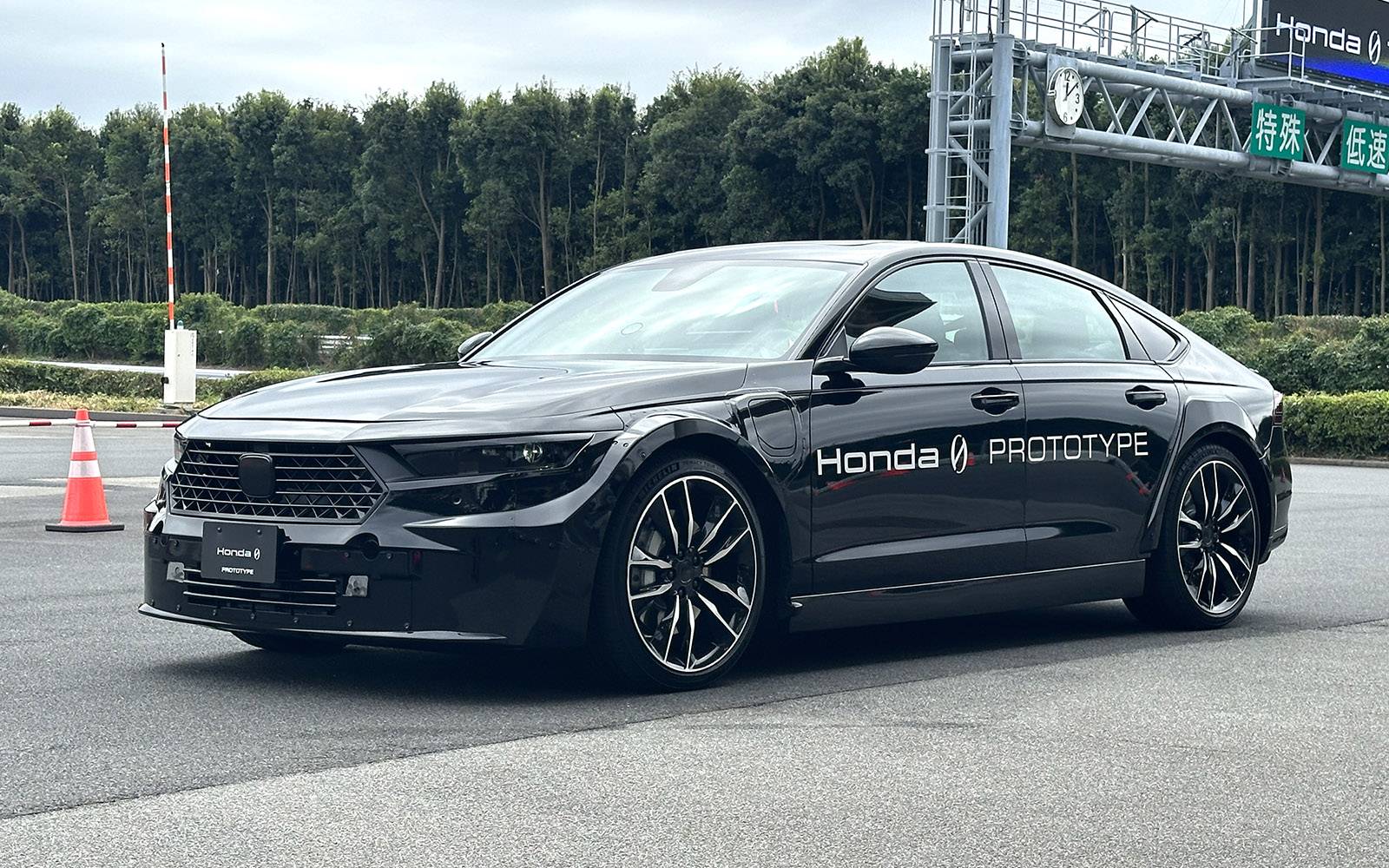We Drove an Accord-Based Honda 0 EV Prototype and It Was Fun


No, what you’re looking at is not an upcoming Honda Accord Type R. The car does have an Accord body (although one with flared fenders), darker headlights and taillights along with 20-inch wheels, but it’s actually a prototype of the Japanese automaker’s next-generation electric vehicle, one that was given a more familiar appearance than the futuristic Honda 0 concepts shown at CES back in January.
While in Japan to attend the Honda 0 Tech Meeting, The Car Guide was allowed to test drive the odd-looking prototype that obviously will not enter production in this current shape and form. If you’ve seen the aforementioned concepts, you know that Honda is working on a boldly styled, extremely aerodynamic sedan that promises to redefine the brand’s image in the EV era.
Read also

Honda calls it the 0 Series, and it’s the start of a new approach centered on maximizing EV performance through downsizing and weight reduction while still offering generous interior space and taking advantage of the latest advancements in electronics and AI. The lighter, thinner architecture will incorporate a next-generation battery pack enabling a range of up to 300 miles (482 km). Single-motor 180kW and dual-motor 360kW variants are planned, the latter benefiting from all-wheel drive.
Weight is the No. 1 enemy of electric cars, as you know, but how much weight reduction are we talking about? Honda claims its new chassis will be 100 kg lighter than similar existing platforms and use 40-percent more compact motors. Active shutters up front will improve aerodynamic efficiency, while a torque-vectoring e-diff and air suspension will help keep body movements in check and enhance comfort. The company doesn’t just want to put on a show, it’s also pretty serious about delivering a new EV driving experience complete with remarkable range given the size of the battery.

Behind the Wheel
Sitting alongside a development engineer, we took the Accord-like Honda 0 Prototype for a quick spin to see for ourselves how the technology comes together. You know, very few EVs out there are actually fun to drive—the BMW i4 is one, and you could also count the Tesla Model 3. Well, this Japanese Frankenstein of a car with dual motors putting out a combined 482 horsepower really was a hoot to drive, mainly because it felt barely heavier than a conventional gas model. By the way, the instruments and centre display inside had been replaced with basic digital gauges for testing purposes.
Blessed with generous power, high-feedback steering, adaptive damping and torque vectoring, the car displayed spirited acceleration, great cornering ability and a very stable ride. Weight transfers were never a problem. Not bad at all for a vehicle that’s not even close to production yet.
A Bright Future
Honda had a host of features and systems to talk about during the media event in Japan, and many of them could be found in the prototype we drove. While we didn’t explore everything or learn all the details, we came away with the conviction that Honda’s electric future indeed looks bright. Drivers will enjoy a more pleasant time than in most other EVs in addition to exceptional energy efficiency. Other journalists on hand managed to drive a CR-V-based prototype, and they too were impressed.

The promising tech will drive several of the brand’s upcoming models, some of which will be assembled in Alliston, Ontario. Their identities have yet to be confirmed, but Honda Canada says we should start to see them around 2027. In the meantime, both Honda and Acura will launch a small electrified SUV that is being developed in-house using a more conservative technology.
That’s the way it goes for the second-best-selling Japanese automaker, which hopes to lure back some of the customers that have turned to other brands in recent years (particularly EV drivers) while simultaneously complying with increasingly stringent emission standards. Incidentally, all new Acura models to be launched after 2025 will be fully electric.








